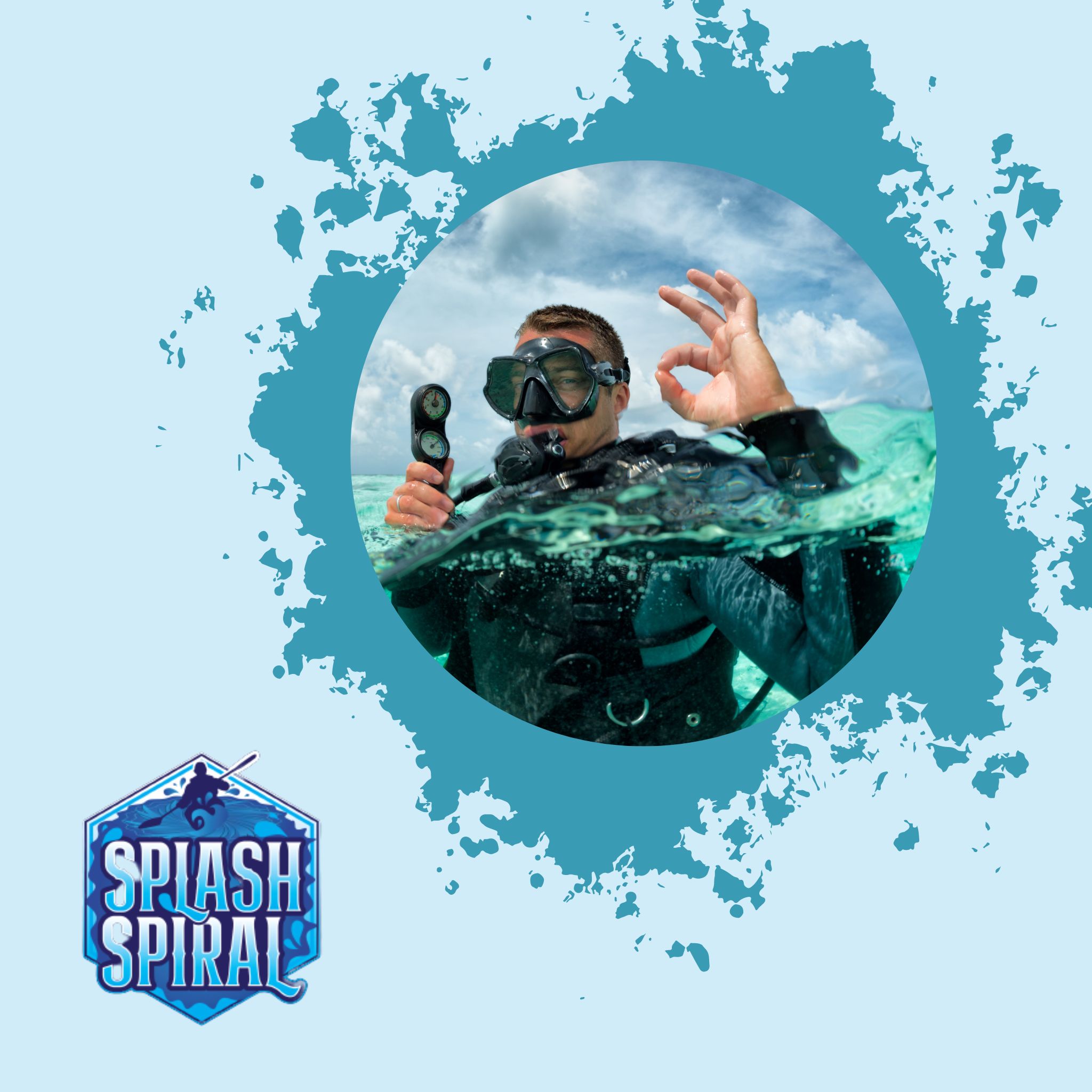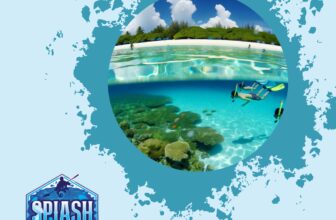
Picture this: you’re exploring a beautiful coral reef, surrounded by colorful fish and marine life. The feeling of weightlessness is freeing as you glide through the water, but suddenly, you feel a sharp pain in your ears. You try to shake it off, but it only gets worse as you descend further into the depths.
Sound familiar? If so, then you may not be properly equalizing your pressure while diving.
Equalizing pressure is an essential scuba diving technique that every diver should master. When we dive underwater, the pressure increases on our bodies and air spaces such as our sinuses and middle ear.
If we don’t equalize that pressure by adding air to those spaces, it can cause pain or even serious injury. As divers, we need to take responsibility for our own safety and well-being while exploring the underwater world.
Understanding how to equalize pressure is just as important as any other aspect of diving technique. In this article, we’ll explore some helpful tips and techniques for proper equalization during dives so that you can enjoy a safe and comfortable experience every time.
Understanding Pressure and Equalization
Equalizing pressure is an essential aspect of diving, and it is an absolute must for any diver who wants to avoid injuries or discomfort. As you descend into the water, you will experience increasing pressure, and if this pressure is not equalized correctly, it can cause significant pain or even damage to your ears and other parts of your body. Therefore, understanding how pressure affects the body while scuba diving and knowing how to equalize it is key.
The Effects of Pressure on the Body
The human body is made up mostly of water and air, both of which are affected by changes in pressure. During a dive, as you descend deeper into the water, the pressure around your body increases because water weighs more than air. This increase in pressure can cause various effects on your body.
One common effect is squeezing or discomfort in the ears due to changes in air pressure. As you go deeper underwater, the air inside your ears gets compressed by the surrounding water’s increasing weight.
This compression can lead to pain or even damage if not equalized correctly. You may also feel sinus pain or headaches during descent since sinuses are small cavities filled with air that are also affected by changing pressures.
Causes of Ear and Sinus Pain During Descent
There are several factors that can contribute to ear and sinus pain during descent when diving:
- Inadequate Pre-Dive Preparation: if you don’t prepare adequately for a dive, such as skipping ear hygiene routines like cleaning out wax buildup beforehand or staying hydrated throughout a long day of diving – this could all lead to issues with equalizing properly.
- Cold Water: cold water can cause vasoconstriction (narrowing of blood vessels), which makes it harder to equalize pressure and can lead to discomfort or pain.
- Illness or Allergies: certain illnesses such as colds, allergies, and sinus infections can cause congestion or inflammation in the ears and sinuses, making it difficult or impossible to equalize pressure during a dive.
It’s important to understand that everyone is different, and the factors affecting one person may not affect another. However, being aware of these common causes can help you prepare better for your next dive.
Techniques for Equalizing Pressure
The Valsalva Maneuver: How to Perform it Correctly and When to Use it
One of the most common and effective ways to equalize pressure while diving is by using the Valsalva Maneuver. This technique involves pinching your nose shut while gently exhaling through your nostrils, which helps to equalize the pressure in your middle ear. It’s important to perform this maneuver correctly, as improper technique can lead to injury or discomfort.
To perform the Valsalva Maneuver, take a deep breath and pinch your nose shut with your fingers. Then, gently blow air out of your nostrils while keeping your mouth closed.
You should feel a slight popping sensation as the pressure in your ears equalizes. Repeat this maneuver as often as necessary during descent.
It’s important to note that the Valsalva Maneuver should only be performed during descent and not during ascent, as it can cause damage if done incorrectly. Additionally, if you have a cold or congestion, you may need to use other techniques for equalizing pressure.
The Toynbee Maneuver: What it is and How to Do it
Another effective technique for equalizing pressure while diving is the Toynbee Maneuver. This maneuver involves swallowing while pinching your nose shut, which helps equalize pressure in both the middle ear and eustachian tubes. To perform the Toynbee Maneuver, pinch your nose shut with one hand and swallow at the same time.
You should feel a slight popping sensation in both ears as pressure is equalized. This technique can be particularly helpful if you are experiencing sinus congestion or blockage that is interfering with normal ear equalization techniques.
The Frenzel Maneuver: Advanced Technique for Equalizing Pressure in the Middle Ear
The Frenzel Maneuver is an advanced technique for equalizing pressure in the middle ear that is often used by experienced divers. This technique involves using the muscles in your throat to compress air into your middle ear, which can help to equalize pressure more effectively than other techniques.
To perform the Frenzel Maneuver, you will need to learn how to control the muscles in your throat and tongue. This can be done through practice and training with a dive instructor or experienced diver.
Once you have learned how to control these muscles, you can begin practicing the Frenzel Maneuver by pinching your nose shut and making a “k” sound with your tongue while simultaneously compressing air into your middle ear. This technique can be challenging to master, but it can be incredibly effective for equalizing pressure while diving.
Tips for Successful Equalization
Pre-dive preparation: How to prepare your ears and sinuses before entering the water
Equalizing pressure while diving is crucial for a safe and enjoyable experience, but it’s important to start preparing your ears and sinuses well before you even enter the water. One way to do this is by using an over-the-counter decongestant spray about 30 minutes before diving.
This helps clear out any congestion in the nasal passages and sinuses, which can make equalization easier during descent. Another important aspect of pre-dive preparation is staying hydrated.
Drinking plenty of fluids helps keep the mucus membranes in your ears and sinuses moist, which can prevent blockages that can lead to pain or discomfort during descent. Avoiding alcohol and caffeine before diving is also recommended as they can dehydrate you.
Descending slowly: The importance of taking your time when descending
Descending too quickly is one of the most common causes of ear pain or discomfort while diving. It’s important to take your time when descending, allowing your body to adjust to the changing pressure gradually. The general rule of thumb is not to descend faster than 30 feet per minute.
If you feel any discomfort or pain during descent, slow down or stop immediately until you can successfully equalize pressure in your ears and sinuses. Remember that it’s always better to ascend a little bit rather than force yourself down if you’re experiencing pain or discomfort.
Clearing often: The benefits of frequent equalization during descent
Clearing often is another key component for successful equalization while diving. You should try to equalize every few feet as you descend, especially during the first few meters since this is where pressure changes are most dramatic. It’s important not only clear early but also clear often – don’t wait until you feel pain or discomfort to equalize pressure.
The more frequently you clear, the less pressure buildup your ears and sinuses will experience, making it easier to equalize throughout your dive. If you’re not sure whether you need to equalize or not, err on the side of caution and do it anyway.
By taking these steps to prepare your ears and sinuses before diving, descending slowly, and clearing often during descent, you’ll greatly increase your chances of having a comfortable and enjoyable diving experience. Remember that safety is always the top priority while diving, so don’t hesitate to ascend or seek assistance if necessary.
Troubleshooting Common Problems
Ear pain or discomfort during descent: What to do if you experience pain or discomfort in your ears
As mentioned earlier, ear pain is a common issue faced by divers during descent. If you experience pain or discomfort in your ears, it’s important to address the issue immediately.
Ignoring the pain can lead to more serious problems such as eardrum rupture. If you start experiencing ear pain, stop descending immediately and try equalizing using the Valsalva Maneuver.
If this does not work, ascend slightly until the pressure decreases and try equalizing again. It’s important not to force the equalization as it can cause more harm than good.
If you still cannot equalize despite trying different techniques, end your dive and seek medical attention. It’s better to be cautious and take a break from diving than risk permanent damage to your ears.
Sinus congestion or blockage: Tips for clearing sinus blockages while diving
Sinus congestion is another common problem that divers face while diving. It can cause discomfort and affect your ability to equalize properly. Here are some tips for clearing sinus blockages while diving:
– Pre-dive preparation: To prevent sinus congestion, avoid alcohol consumption before the dive and make sure you are well hydrated. – Use decongestants: If you know that you have a history of sinus problems while diving, consider taking a decongestant before starting your dive.
– Alternate between techniques: The Valsalva Maneuver may not be effective in clearing blocked sinuses; therefore, alternate between techniques such as the Toynbee Maneuver or swallowing. – Take breaks: If you feel any discomfort or pressure building up in your sinuses during descent, take a break by ascending slightly until the pressure decreases.
If these tips do not work or if the sinus congestion persists, it’s best to end the dive and seek medical attention. Remember that diving should be an enjoyable experience, and any discomfort or pain should not be ignored.
Conclusion
Recap of Key Takeaways from the Article
Equalizing pressure is crucial when it comes to diving. When you understand how pressure affects your body, you can take steps to equalize it and avoid discomfort or injury. The most common techniques for equalizing pressure include the Valsalva, Toynbee, and Frenzel maneuvers.
It’s essential to prepare your ears and sinuses before diving and take your time while descending. If you experience pain or discomfort during descent, try taking a break at a shallower depth until the discomfort subsides.
If you have persistent ear or sinus problems, consult with a doctor before diving. By practicing good equalization techniques, you can ensure a safe and enjoyable dive experience.
Encouragement to Continue Practicing Good Equalization Techniques for a Safe and Enjoyable Dive Experience
Diving is an incredible adventure that offers endless possibilities for exploration and discovery. By practicing good equalization techniques, you can enjoy all that diving has to offer while minimizing discomfort or injury.
Don’t let ear or sinus problems hold you back from diving—by taking steps to prepare yourself before entering the water and utilizing proper equalization techniques during your dive, you can explore the underwater world with confidence. Remember that every diver’s experience is unique.
What works best for one person may not be as effective for another. Don’t be afraid to experiment with different techniques until you find what works best for your body.
By understanding how pressure affects the body when diving and practicing good equalization techniques like the Valsalva, Toynbee, and Frenzel maneuvers—you can have a safe dive experience free of pain or discomfort. With a little preparation and patience, you can embark on an incredible underwater adventure that will leave you with unforgettable memories!
Other Scuba diving techniques
Breathing techniques
Underwater navigation
Dive planning and safety procedures
Gas management







